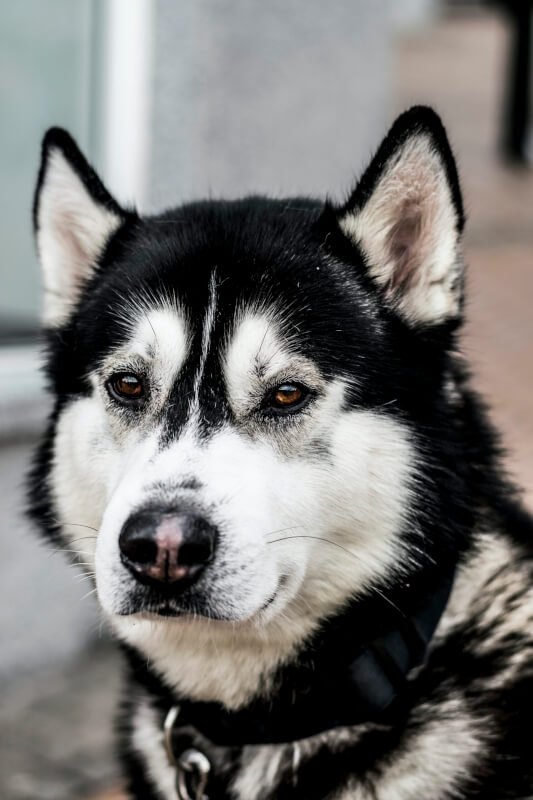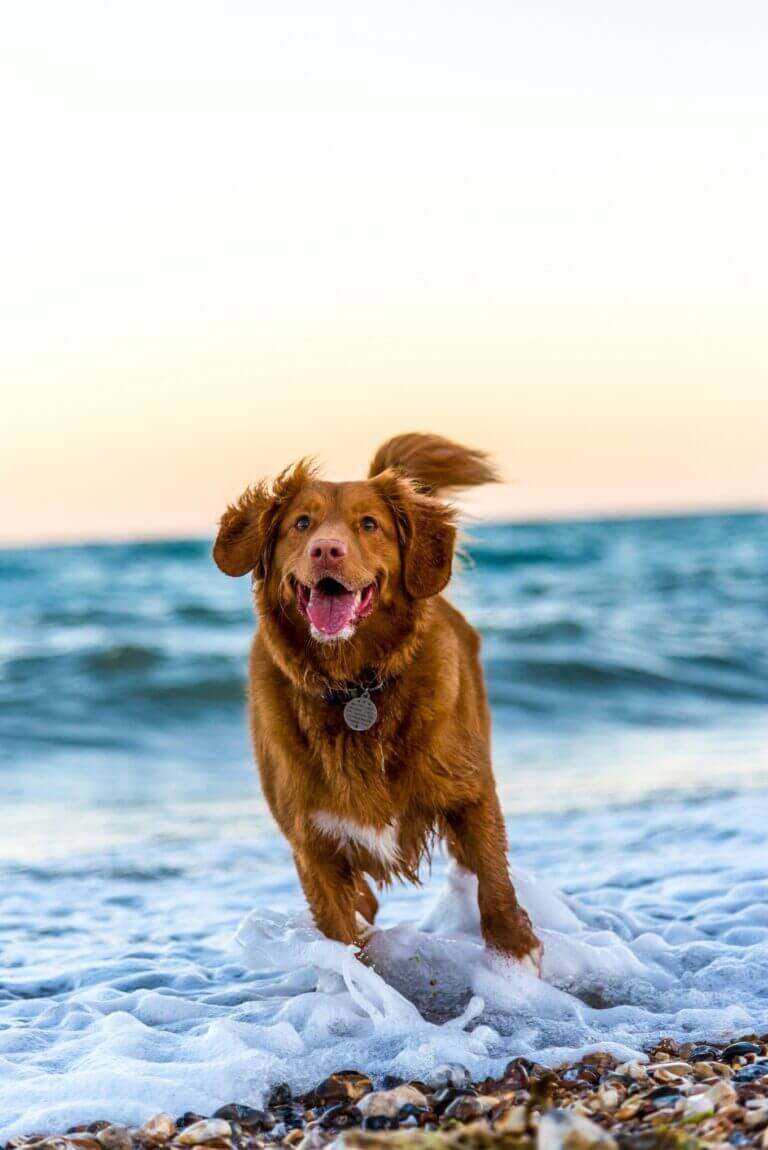Are you frustrated with your dog’s bad behavior? From incessant barking to destructive chewing, dealing with unruly behavior can be overwhelming. But fear not, because this article is here to lend a helping paw. In this guide, we will explore effective strategies to train your furry friend and put an end to their troublesome antics. Whether your dog has a penchant for digging up your garden or jumping on every guest that walks through the door, we’ve got you covered. So grab a treat, leash up your pup, and let’s embark on a journey towards a well-behaved and happy dog.

Understanding Bad Behavior in Dogs
Dogs are known for their loyalty, love, and companionship. However, sometimes they can display behaviors that are considered “bad” or undesirable. As a responsible dog owner, it’s important to understand the common types of bad behavior in dogs, their underlying causes, and the importance of addressing these behaviors.
Ready for Cat Trivia?
Test your knowledge about cats!

Common Types of Bad Behavior
Bad behavior in dogs can manifest in various ways. Some of the most common types of bad behavior include:
- Aggression: Aggression can range from growling and snapping to biting. It can be directed towards people, other animals, or even objects.
- Separation anxiety: Dogs with separation anxiety may exhibit excessive distress and destructive behavior when left alone.
- Destructive behavior: Chewing furniture, digging in the yard, or tearing up belongings are examples of destructive behavior in dogs.
- Excessive barking: Dogs may bark excessively, causing noise disturbances for both the owner and neighbors.
- Resource guarding: Dogs may exhibit aggressive behavior when they perceive a threat to their possessions, such as food, toys, or territory.
- Jumping up: Dogs may jump up on people as a way to seek attention or show excitement.
- House soiling: Dogs may urinate or defecate indoors, even after being potty trained.
- Leash pulling: Dogs may constantly pull on the leash during walks, making it difficult to control them.
- Fear and anxiety: Dogs can experience fear and anxiety in various situations, leading to trembling, excessive panting, or avoidance behavior.
Causes of Bad Behavior
Understanding the underlying causes of bad behavior in dogs is crucial to address and correct these behaviors effectively. Some common causes include:
- Lack of socialization: Dogs that haven’t been properly socialized may exhibit fear or aggression towards unfamiliar people or animals.
- Previous trauma or abuse: Dogs that have experienced a traumatic event or abuse in the past may develop behavioral issues as a result.
- Insufficient exercise and mental stimulation: Dogs that don’t receive enough physical or mental stimulation may resort to destructive behaviors out of boredom.
- Separation anxiety: Dogs who have not been taught how to cope with being alone may develop separation anxiety, leading to destructive behaviors.
- Fear or phobias: Dogs may exhibit bad behavior as a result of specific fears or phobias, such as thunderstorms, loud noises, or certain objects.
Importance of Addressing Bad Behavior
Addressing bad behavior in dogs is essential for several reasons. Firstly, these behaviors can be a safety concern for both the dog and those around them. Aggression, for example, can lead to injuries and legal complications. Secondly, unresolved bad behavior can strain the relationship between the dog and their owner, as well as negatively impact the dog’s overall well-being. Lastly, by addressing and correcting bad behavior, you can create a happier and more harmonious environment for both you and your furry friend.
Identifying and Resolving Aggression
Aggression is one of the most concerning and challenging types of bad behavior in dogs. Understanding the different types of aggression, recognizing the signs, and employing effective techniques to address it is essential for every dog owner.
Types of Aggression
Aggression in dogs can be categorized into various types, including:
- Fear aggression: Dogs may display aggression as a response to stimuli they perceive as threatening or fear-inducing.
- Territorial aggression: Dogs may exhibit aggressive behavior when they feel their territory is being invaded or threatened.
- Protective aggression: Dogs may become aggressive when they perceive a threat to their owner or their family members.
- Possessive aggression: Dogs may show aggression over resources they consider valuable, such as food or toys.
- Dominance aggression: Dogs may display aggression as a way to assert their dominance over other animals or even humans.
Signs of Aggression in Dogs
It’s crucial to be able to recognize the signs of aggression in dogs in order to address the behavior effectively. Some common signs of aggression include:
- Growling or snarling
- Showing teeth or biting
- Stiff body posture
- Raised hackles (the hair along the dog’s back)
- Lunging or barking aggressively
- Defensive behavior, such as backing away or cowering
Techniques to Deal with Aggressive Behavior
It’s important to address aggression in dogs promptly and safely. Here are some techniques to help deal with aggressive behavior:
- Consult a professional: Seek guidance from a professional dog trainer or animal behaviorist experienced in handling aggression cases.
- Training and behavior modification: Implement positive reinforcement training techniques to redirect your dog’s aggressive behaviors and reward calm behavior.
- Manage the environment: Create a safe and controlled environment for your dog by removing potential triggers and setting up boundaries.
- Provide mental and physical stimulation: Engage your dog in activities that provide mental and physical exercise to help reduce stress and anxiety.
- Consistency and patience: Be consistent in your training and rehabilitation efforts, and remember that addressing aggression takes time and patience.
By addressing aggression in dogs, you can create a more peaceful and safe environment for both your furry friend and those around them.
Dealing with Separation Anxiety
Separation anxiety can cause distress for both dogs and their owners. Recognizing the signs, understanding the symptoms, and implementing effective tips to help dogs with separation anxiety can make a significant difference in their well-being.
Recognizing Separation Anxiety
Separation anxiety is a condition in which dogs feel extreme distress when separated from their owners or when left alone. Recognizing the signs of separation anxiety is crucial to addressing the behavior. Some signs of separation anxiety include:
- Excessive barking, whining, or howling when alone
- Destructive behavior, such as chewing furniture or scratching doors
- House soiling even after being potty trained
- Attempting to escape or causing self-injury
- Excessive drooling or panting when separated
- Pacing or restlessness when alone
Symptoms of Separation Anxiety
In addition to the signs mentioned above, dogs with separation anxiety may experience several physical and emotional symptoms. These symptoms can include:
- Loss of appetite
- Diarrhea or vomiting
- Excessive salivation
- Trembling or shaking
- Depression or lethargy
Tips to Help Dogs with Separation Anxiety
If your dog is experiencing separation anxiety, there are several tips that can help alleviate their distress:
- Gradual desensitization: Gradually expose your dog to being alone for short periods and gradually increase the duration over time, using positive reinforcement techniques.
- Create a safe space: Provide a designated area in your home that your dog associates with comfort and security, where they can retreat to when left alone.
- Behavioral modification: Work with a professional dog trainer or behaviorist to implement behavior modification techniques specific to separation anxiety.
- Provide mental stimulation: Use puzzle toys, treat-dispensing toys, or interactive games to keep your dog mentally engaged and occupied when you’re away.
- Consider medication: In severe cases, medication prescribed by a veterinarian may be necessary to help manage separation anxiety.
By implementing these tips and providing the necessary support to dogs with separation anxiety, you can help them feel more secure and reduce their distress when alone.
Managing Destructive Behavior
Destructive behavior in dogs can be frustrating and costly. Understanding the causes, recognizing common examples, and employing effective strategies to prevent and correct destructive behavior is essential for a harmonious relationship between you and your furry companion.
Understanding the Causes of Destructive Behavior
Dogs may engage in destructive behavior due to various underlying causes. Some common causes include:
- Boredom and under-stimulation: Dogs that don’t receive enough mental or physical exercise may resort to destructive behaviors as a way to relieve their pent-up energy.
- Separation anxiety: Dogs with separation anxiety may exhibit destructive behaviors as a result of distress and panic when left alone.
- Lack of training or supervision: Dogs that haven’t been properly trained or supervised may not understand what is appropriate to chew on or play with, leading to destructive behavior.
- Teething or dental discomfort: Puppies and dogs experiencing teething or dental discomfort may chew on objects as a way to relieve pain and irritation.
Common Examples of Destructive Behavior
Destructive behavior can manifest in different ways, with some common examples including:
- Chewing on furniture, shoes, or household items
- Digging up the yard or garden
- Scratching or chewing on doors, walls, or window sills
- Ripping apart cushions or pillows
- Shredding paper or fabrics
Effective Strategies to Prevent and Correct Destructive Behavior
To prevent and correct destructive behavior in dogs, consider implementing the following strategies:
- Provide appropriate chew toys: Ensure your dog has access to a variety of safe and durable chew toys that they can redirect their chewing behavior towards.
- Exercise and mental stimulation: Make sure your dog receives sufficient daily exercise and mental stimulation through playtime, puzzle toys, or training sessions.
- Create a safe and enriched environment: Remove or secure any items in your home that could be tempting for your dog to chew on, and provide them with plenty of interactive toys and activities.
- Supervise and redirect: Keep a close eye on your dog whenever they are loose in the house and redirect their attention to appropriate toys or activities if you notice them engaging in destructive behavior.
- Positive reinforcement training: Use positive reinforcement techniques to reward your dog for appropriate behavior and redirect their focus away from destructive behaviors.
By addressing the underlying causes of destructive behavior and implementing these effective strategies, you can help prevent and correct destructive behavior in your furry friend.

Addressing Excessive Barking
Excessive barking can be both frustrating for dog owners and disruptive for neighbors. Understanding the reasons behind excessive barking, employing training techniques, and ensuring a quiet environment can help curb this behavior.
Reasons Behind Excessive Barking
Dogs may bark excessively due to various reasons. Some common reasons include:
- Territorial behavior: Dogs may bark excessively to protect their territory or to alert their owners of potential intruders or threats.
- Fear or anxiety: Dogs with fear or anxiety may bark excessively as a way to express their discomfort or to seek reassurance.
- Boredom or attention-seeking: Dogs that are bored or seeking attention may resort to excessive barking as a means to entertain themselves or to gain their owner’s attention.
- Lack of socialization: Dogs that haven’t been properly socialized may bark excessively in response to unfamiliar people or animals.
- Medical issues: Some medical conditions, such as cognitive dysfunction or hearing loss, may cause dogs to bark more than usual.
Training Techniques to Reduce Barking
To address excessive barking in dogs, consider using the following training techniques:
- Identify triggers: Identify the specific triggers that cause your dog to bark excessively, such as the presence of strangers, loud noises, or other animals.
- Desensitization and counter-conditioning: Gradually expose your dog to the triggers in a controlled and calm manner, rewarding them for calm and quiet behavior.
- Teach “quiet” command: Train your dog to understand a command, such as “quiet” or “enough,” and reward them for stopping their barking on command.
- Divert attention: Provide your dog with alternative activities or toys to redirect their attention away from barking.
- Consistency and positive reinforcement: Consistency is key when training your dog to reduce excessive barking. Use positive reinforcement techniques to reward quiet behavior and ignore excessive barking.
Ensuring a Quiet Environment for Your Dog
In addition to training techniques, ensuring a quiet environment for your dog can also help reduce excessive barking. Consider the following tips:
- Provide mental and physical stimulation: Engage your dog in regular exercise and provide mental stimulation through puzzle toys or interactive games to help prevent boredom and excessive barking.
- Create a calm space: Provide your dog with a designated area where they feel safe and comfortable, which can help reduce anxiety and barking triggered by outside stimuli.
- Consider white noise or calming music: Playing white noise or calming music can help drown out external noises that may trigger excessive barking.
- Address underlying issues: If your dog’s excessive barking persists despite training and environmental adjustments, consult with a professional to rule out any underlying medical or behavioral issues.
By understanding the reasons behind excessive barking, implementing effective training techniques, and creating a calm environment, you can help curb this behavior and promote a quieter atmosphere for both you and your dog.
Dealing with Resource Guarding
Resource guarding is when a dog becomes possessive and exhibits aggressive behavior when they perceive a threat to their possessions, such as food, toys, or territory. Recognizing resource guarding behavior, understanding the causes, and implementing steps to manage and resolve it is essential for a harmonious relationship with your dog.
Recognizing Resource Guarding Behavior
Recognizing the signs of resource guarding behavior is the first step in addressing and managing this issue. Some signs of resource guarding behavior include:
- Growling, snapping, or biting when approached while eating or around their possessions
- Stiff body posture or tense facial expressions when someone gets near their belongings
- Showing defensive behavior, such as placing their body between you and their possessions
- Ears back, tail lowered, or raised hackles when they feel threatened
Causes of Resource Guarding
Resource guarding behavior can have various underlying causes, including:
- Survival instinct: Dogs may develop resource guarding behavior as a natural instinct to protect their resources, which they perceive as essential for their survival.
- Lack of socialization: Dogs that haven’t been properly socialized may exhibit resource guarding behavior due to fear or insecurity around other animals or unfamiliar people.
- Previous negative experiences: Dogs that have experienced previous incidents where their resources were taken away or threatened may develop resource guarding behavior as a protective response.
- Possessiveness and dominance: Dogs with a naturally possessive or dominant temperament may be more prone to displaying resource guarding behavior.
Steps to Manage and Resolve Resource Guarding
Managing and resolving resource guarding behavior requires a combination of training techniques and behavior modification. Consider the following steps to address resource guarding:
- Consult with a professional: Seek guidance from a professional dog trainer or behaviorist experienced in resource guarding cases.
- Behavior modification: Implement protocols to gradually desensitize your dog to the presence of people or other animals near their resources, rewarding calm and non-aggressive behavior.
- Teach the “leave it” or “drop it” command: Train your dog to understand commands that encourage them to willingly let go of their possessions and be comfortable with doing so.
- Prevent and manage triggers: Remove your dog’s access to valuable resources when they are around other animals or young children, and gradually reintroduce controlled interactions as their behavior improves.
- Provide an enriched environment: Ensure your dog feels secure and has access to plenty of resources, such as toys, food, and attention, to reduce possessiveness over specific items.
By implementing these steps and seeking professional guidance when necessary, you can help manage and resolve resource guarding behavior in your dog, promoting a safer and more harmonious environment for everyone involved.

Correcting Jumping Up
Jumping up is a common behavior exhibited by dogs as a way to seek attention or show excitement. While it may be cute in puppies, it can become a nuisance and even dangerous as dogs grow bigger. Understanding the reasons for jumping up, employing training approaches, and encouraging alternative greetings can help correct this behavior.
Understanding the Reasons for Jumping Up
Dogs may engage in jumping up behavior due to various reasons. Understanding the underlying motivations can help in addressing and redirecting this behavior. Some reasons for jumping up include:
- Seeking attention: Dogs may jump up to seek attention from their owners or other people around them.
- Excitement: Dogs may jump up when they are overly excited, such as when greeting their owners after a long absence or encountering new people.
- Lack of training: Dogs may not have been properly trained to understand that jumping up is an undesirable behavior.
Training Approaches to Stop Jumping Up
To effectively address and correct jumping up behavior, consider the following training approaches:
- Ignore and redirect: Turn away from your dog and withdraw attention when they jump up, only rewarding and acknowledging them when all four paws are on the ground.
- Teach alternative behaviors: Train your dog to perform alternative behaviors, such as sitting or offering a paw, as a way to greet and interact with people.
- Consistency in training: Ensure that everyone interacting with your dog enforces the same rules and consistently discourages jumping up behavior.
- Positive reinforcement: Use positive reinforcement techniques, such as treats or praise, to reward and reinforce desired greeting behaviors.
- Provide an outlet for energy: Ensure your dog receives sufficient physical exercise and mental stimulation to help reduce their excitement levels and the urge to jump.
Tips to Encourage Alternative Greetings
To encourage alternative greetings and reinforce polite behavior in your dog, consider the following tips:
- Teach the “sit” command: Train your dog to sit and wait calmly as an alternative behavior when greeting people.
- Ask for a specific behavior: Request a specific behavior, such as shaking hands or offering a toy, as a way for your dog to receive attention and rewards during greetings.
- Reward polite behavior: Reward and praise your dog when they approach people calmly and wait for permission before engaging physically.
- Be consistent: Consistency is key in teaching alternative greetings. Ensure that all family members and visitors follow the same rules and reinforce the desired behavior.
By understanding the reasons behind jumping up behavior, using effective training approaches, and encouraging alternative greetings, you can help your dog develop more polite and appropriate ways to interact with people.
Handling House Soiling
House soiling, or inappropriate elimination, is a frustrating behavior for dog owners. Understanding the causes, implementing potty training techniques, and preventing and correcting accidents can help manage this issue successfully.
Determining the Causes of House Soiling
House soiling can have various underlying causes. Understanding and addressing these causes can help resolve the problem more effectively. Some common causes include:
- Insufficient potty training: Dogs that haven’t been properly potty trained may not fully understand appropriate elimination behavior and may have accidents indoors.
- Medical issues: Certain medical conditions, such as urinary tract infections, digestive disorders, or mobility issues, can cause dogs to have accidents indoors.
- Anxiety or stress: Dogs that experience anxiety or stress may exhibit house soiling as a response to these emotional factors.
- Marking behavior: Unneutered male dogs or dogs that haven’t been spayed or neutered may engage in marking behavior by urinating in specific areas to establish their territory.
Potty Training Techniques
Effective potty training is crucial in preventing and correcting house soiling in dogs. Consider the following techniques to ensure successful potty training:
- Establish a routine: Create a consistent daily routine for feeding, potty breaks, and exercise to help regulate your dog’s elimination schedule.
- Supervision and confinement: Keep a close eye on your dog and confine them to areas where accidents are less likely to occur, such as a small space or a crate.
- Positive reinforcement: Reward your dog with praise, treats, or playtime immediately after they eliminate in the appropriate area to reinforce the desired behavior.
- Frequent and timely potty breaks: Take your dog outside frequently, especially after meals, naps, or play sessions, to prevent accidents indoors.
- Management and consistency: Minimize opportunities for accidents by supervising your dog closely, limiting their access to certain areas until they are fully potty trained.
Preventing and Correcting Accidents in the House
To prevent and correct accidents in the house, consider the following tips:
- Clean accidents thoroughly: Use an enzymatic cleaner specifically designed for pet accidents to remove any traces of odor, as dogs are more likely to eliminate in areas with lingering smells.
- Interrupt and redirect: If you catch your dog in the act of eliminating indoors, interrupt them with a sharp noise without scaring them, and immediately take them outside to finish.
- Avoid punishment: Avoid punishing or scolding your dog for accidents, as this can create fear or anxiety and hinder the potty training process.
- Monitor their behavior: Watch for signs that your dog needs to eliminate, such as sniffing, circling, or restlessness, and take them outside promptly.
By implementing proper potty training techniques, addressing any underlying causes, and providing consistent supervision and guidance, you can successfully manage house soiling issues in your dog.

Managing Leash Pulling
Leash pulling can make walks frustrating and unpleasant for both you and your dog. Understanding the reasons behind leash pulling, employing effective training methods, and using proper equipment can help improve leash behavior and make walks more enjoyable.
Reasons for Leash Pulling
Dogs may pull on the leash for various reasons. Understanding these motivations can help address the behavior more effectively. Some reasons for leash pulling include:
- Excitement or lack of impulse control: Dogs may pull on the leash in their eagerness to explore or when they cannot contain their excitement during walks.
- Lack of proper leash training: Dogs that haven’t been properly trained to walk on a leash may pull due to a lack of understanding of what is expected of them.
- Desire to explore or follow scents: Dogs may pull on the leash when they catch a scent or are eager to explore their surroundings.
- Anxiety or fear: Dogs experiencing anxiety or fear during walks may pull as a way to escape or avoid perceived threats.
Training Methods to Reduce Leash Pulling
To reduce leash pulling behavior, consider utilizing the following training methods:
- Teach loose leash walking: Train your dog to walk politely on a loose leash by rewarding them for walking beside you without tension on the leash.
- Use positive reinforcement: Praise and reward your dog for walking calmly on a loose leash, redirecting their attention to you whenever they start to pull.
- Stop and change direction: When your dog starts pulling, stop walking and change direction to signal to them that pulling won’t lead them forward.
- Practice impulse control exercises: Engage your dog in impulse control exercises, such as “wait” or “leave it” commands, to help them learn self-control and patience during walks.
- Gradual exposure to distractions: Gradually expose your dog to distractions and gradually increase the difficulty level of walks to help them learn to stay focused and walk calmly.
Using Proper Equipment to Improve Leash Behavior
In addition to training methods, using proper equipment can help improve leash behavior. Consider the following options:
- Harness: A well-fitted harness can distribute pressure more evenly than a collar, reducing the likelihood of injury if your dog pulls.
- Front-clip harness: Front-clip harnesses can discourage pulling by redirecting your dog’s forward momentum when they pull.
- Head halter: Head halters can provide control by gently guiding your dog’s head and redirecting their attention, discouraging pulling.
- Martingale collar: Martingale collars can prevent dogs from slipping out of their collar while providing more control during walks.
By using effective training methods, utilizing proper equipment, and remaining consistent in your approach, you can greatly improve your dog’s leash behavior and make walks more enjoyable for both of you.
Dealing with Fear and Anxiety
Fear and anxiety can greatly impact a dog’s quality of life and their relationship with their owner. Identifying fear and anxiety in dogs, recognizing common triggers, and implementing strategies to help them overcome these emotions are vital for their well-being.
Identifying Fear and Anxiety in Dogs
Recognizing signs of fear and anxiety is crucial in addressing these emotions in dogs. Some common signs of fear and anxiety include:
- Trembling, panting, or pacing
- Excessive barking or howling
- Hiding or seeking close contact with their owner
- Dilated pupils and a tense body posture
- Attempting to escape or hiding behind furniture
- Refusing to eat, drink, or engage in usual activities
Common Triggers of Fear and Anxiety
Fear and anxiety in dogs can be triggered by various factors. Identifying these triggers can help mitigate their impact and implement appropriate strategies. Some common triggers include:
- Loud noises: Thunderstorms, fireworks, or other loud noises can trigger fear and anxiety in dogs.
- Separation: Being left alone or separated from their owner or family can cause distress and anxiety in dogs.
- New environments or unfamiliar people: Dogs may experience fear and anxiety when exposed to new surroundings or unfamiliar individuals.
- Previous traumatic experiences: Dogs with a history of trauma or abuse may be more prone to fear and anxiety.
Strategies to Help Dogs Overcome Fear and Anxiety
Helping dogs overcome fear and anxiety requires a multi-faceted approach. Consider the following strategies:
- Create a safe space: Provide a designated area where your dog feels safe and can retreat to when they are experiencing fear or anxiety.
- Desensitize and counter-condition: Gradually expose your dog to their triggers in a controlled and positive manner, rewarding them for calm and non-reactive behavior.
- Implement management techniques: If specific triggers can be avoided or controlled, such as loud noises or crowded spaces, take measures to minimize their impact on your dog.
- Consult with a professional: Seek guidance from a professional dog trainer or behaviorist experienced in working with fearful or anxious dogs.
- Consider medication: In severe cases, medication prescribed by a veterinarian may be necessary to help alleviate your dog’s fear and anxiety.
By implementing these strategies and providing a supportive and understanding environment, you can help your dog overcome their fear and anxiety, leading to a happier and more balanced life.
In conclusion, understanding and addressing bad behavior in dogs is crucial for both their well-being and the harmonious relationship between you and your furry friend. By recognizing the common types of bad behavior, understanding their causes, and employing effective techniques and training approaches, you can help your dog become a well-behaved and happy member of your family. Remember to always approach training and behavior modification with patience and consistency, seeking professional guidance when necessary. With dedication and care, you can guide your dog towards better behavior and create a loving and positive environment for both of you.



